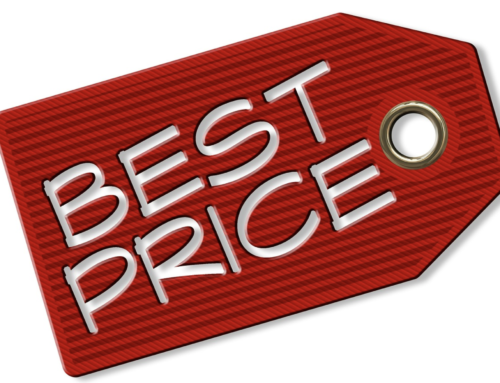If you find pricing your products or services perplexing, rest assured you’re not alone.
Pricing is a critical facet of any business, yet it’s an area where many companies struggle to strike the right balance.
In today’s dynamic business landscape, crafting an effective pricing strategy has become more crucial.
Fear not!
We’re here to guide you through the intricacies of pricing, armed with insights from McKinsey and other industry experts.
Our mission is to help you master the art of pricing and boost your profitability.
Unveiling the McKinsey Way to Pricing
One of McKinsey’s invaluable insights, as conveyed by former employee Ethan Rasiel, author of The McKinsey Way and The McKinsey Mind involves the art of pricing products and services.
In short, McKinsey argues that most businesses undervalue their offerings because they struggle to quantify and effectively communicate their true worth. And, in nearly every one of their client engagements, pricing is incorrect.
Telegram One: Value Creation and Communication Are Key!
The first key takeaway is crystal clear: brands need to excel in value creation and convey that value explicitly to their customers. This is precisely where many companies stumble.
Telegram Two: Raise Prices to Increase Profit!
Surprisingly, McKinsey argues that raising prices can be the easiest, simplest, and least expensive way to increase sales profitably. It might sound counterintuitive at first, but let’s delve deeper into why this is the case.
The Pitfall of Underpricing
McKinsey’s argument revolves around the idea that most brands underprice their products or services because they haven’t put in the effort to convincingly demonstrate their value. Consequently, brands continually lower their prices or offer discounts to a point where customers find the price acceptable. This perpetual cycle of undercutting ultimately erodes profitability.
Exploring 25 Pricing Models: From Art to Science
Pricing is both an art and a science, and mastering it can significantly impact your business’s profitability and success. While the cost-plus pricing model (see #4 below) is a common starting point, there are numerous other pricing models and strategies available. In this comprehensive guide, we’ll explore a wide range of pricing models, including some you may not have considered.
- Anchor Pricing. Introduce a high-priced product first to establish a price anchor in customers’ minds. It can make subsequent, lower-priced options seem more appealing.
- Auction Pricing. Allow customers to bid on your products or services, and the highest bidder determines the final price. It’s commonly used in online marketplaces like eBay.
- Bundling Pricing. Offering packages that combine multiple products or services at a lower price than if they were purchased separately. It encourages customers to buy more.
- Cost-Plus Pricing. This is the foundational pricing model, where you determine your price by adding a markup to your costs. It’s simple but may not account for market dynamics or customer value perception.
- Decoy Pricing. Presenting a third pricing option that is strategically designed to make the main offering appear more attractive. It can influence customers’ choices.
- Dynamic Pricing. Using real-time data and algorithms to adjust prices based on demand, competitor pricing, and other market factors. It’s common in e-commerce and the airline industry.
- Early Bird Pricing. This strategy offers a discounted rate to encourage customers to book or purchase tickets (usually) well before the actual experience to drive sales weeks or months before an event or tour. The discount typically falls between 10% and 20% and can be shared as early as six months in advance. For events, though, they’re shared 10 to 15 weeks ahead of time. Early bird pricing deals are only offered for a specific period before regular pricing kicks in. And they are typically limited in quantity, which makes guests feel a sense of urgency to snag the deal before it’s gone.
- Elasticity Pricing. Pricing is based on your target market’s known or perceived price sensitivity. When demand is elastic, you can adjust prices without significantly affecting demand; price changes have a more substantial impact when demand is inelastic. If a product is price elastic, a small price change will significantly change the demand for that product while holding everything else constant (i.e., pricing terms, product quality and size, etc.).To calculate price elasticity, divide the change in demand (or supply) for your product or service by its change in price. This number will tell you the area your product falls into.A value of one means that your product is unit elastic, and changes in your price reflect an equal change in supply or demand.A value greater than one means that your product is elastic, and changes in your price will cause a greater-than-proportional change in supply or demand.A value of less than one means that your product is inelastic, and changes in your price will result in a minor change in the supply or demand for your product.
- Flexible Pricing. Adjusting prices to meet changing competitive and marketplace conditions. This model allows you to remain agile in response to market fluctuations.
- Follow Pricing. Setting prices in line with industry price leaders. It’s a strategy that can help you position your product or service as competitive within your market.
- Freemium Pricing. Offering a free basic version of your product or service and charging for premium features or additional services. This model is prevalent in the software and app industries.
- Geographical Pricing. Adjusting prices based on the location of the customer. This can account for cost variations, taxes, and local market conditions.
- High-Low Pricing. Offering products at high initial prices and later discounting them. This strategy can create a sense of urgency and attract bargain-seeking customers.
- Loss-Leader Pricing. Offering specific items at a low price to attract buyers, with the expectation that they will purchase other higher-margin products or services.
- Odd-Even Pricing. Pricing products with odd-ending digits (e.g., $9.99) to create a perception of a lower price or with even-ending digits (e.g., $10.00) for simplicity and transparency. Costco uses this strategy.
- Pay-What-You-Want Pricing. This strategy allows customers to choose the price they’re willing to pay for your product or service and relies on their sense of fairness.
- Penetration Pricing. Setting prices below prevailing levels to gain market entry or increase market share rapidly. It’s often used when entering a competitive market.
- Phase-Out Pricing. Pricing a product intentionally high to encourage its removal from your product line. This can be useful for discontinuing products that are no longer profitable.
- Pre-emptive Pricing. This strategy relies on making it financially unattractive for others to compete and discourages potential competitors from entering your market.
- Psychological Pricing. Pricing at levels that sound significantly lower than they are, such as $9.99 instead of $10. This can create a perception of a better deal.
- Segment Pricing. Offering essentially the same products or services at different prices to various market segments. It recognizes that different customer groups may be willing to pay different prices.
- Skim Pricing. Setting an initial high price for a new product to target early adopters and maximize revenue from those willing to pay a premium for innovation.
- Slide-Down Pricing. Gradually reducing prices over time to tap into successive layers of demand. It allows you to cater to different customer segments as prices decrease.
- Subscription Pricing. Charging customers repeatedly for access to your product or service. It creates a steady stream of revenue and customer loyalty.
- Value-Based Pricing. Focusing on delivering superior value to customers compared to competitors, often at a premium price. This approach emphasizes the overall benefits and experience. Pricing your products or services based on their perceived value involves understanding your customers’ needs and willingness to pay.
These 25 pricing models and strategies offer multiple avenues for businesses to optimize their pricing, boost profitability, and better meet the needs of their customers.
The right pricing strategy depends on various factors, including your industry, target audience, and competitive landscape. Combining pricing strategies is a good idea too.
Continuously evaluating and adjusting your pricing strategy is essential to remaining competitive and profitable.
The Power of ‘WOW’ Experiences
Beyond pricing models, consider enhancing your customers’ experiences. A unique and meaningful ‘WOW‘ experience can justify a higher price.
Many small businesses have untapped potential in this area but often get bogged down in their day-to-day operations.
Take Control and Lead
While you can’t control external factors like government policies or competitive moves, you can lead your brand to more profitable times through innovative pricing and enhanced customer experiences. Pricing is a potent tool in your arsenal.
Recommended Pricing Books
To further immerse yourself in the intricate world of pricing, we highly recommend exploring these three exceptional pricing books:
- “Full Price” by Winninger
- “Pricing for Profit” by Furtwengler
- “The Price Advantage” by Baker, Marn, and Zawada
Final Thoughts
Pricing is not a one-size-fits-all endeavor. It demands meticulous consideration, ongoing analysis, and a willingness to innovate. If you ever find pricing to be a complex puzzle, remember that you’re not alone. Seek guidance, explore different pricing models, and prioritize creating exceptional customer experiences. By mastering the art of pricing for profit, you can unlock the full potential of your business and pave the way for sustained success. Your journey to pricing excellence begins today!
Please email me at stephen.wayhart@brandmill.com or call me at 412.401.0555 today if you need marketing help.
Thank you.


